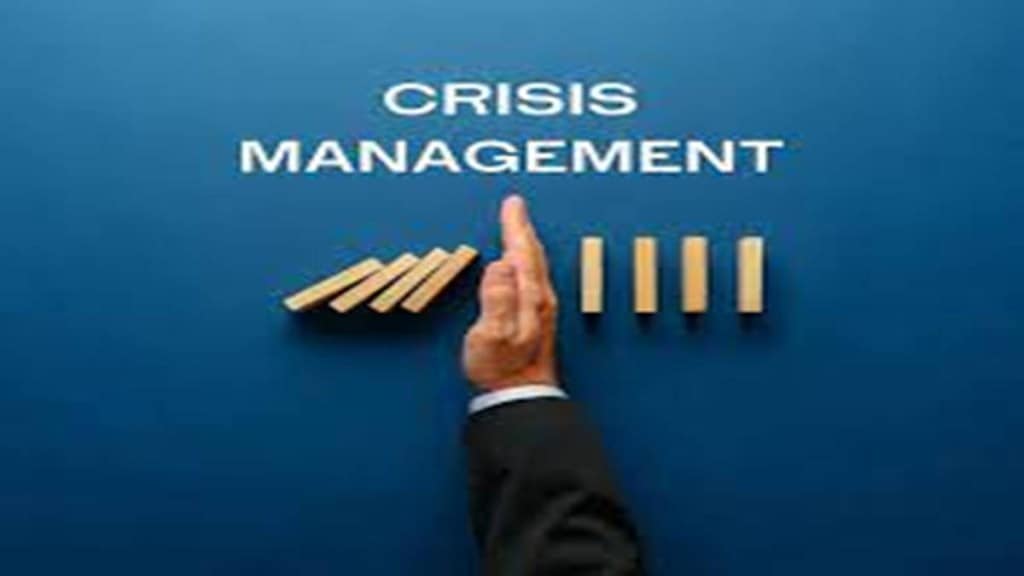By Dr Jagdish Chandra Rout
Lexically, ‘Crisis’ (crises in plural number) is “a time of intense difficulty or danger”, and the foregone conclusion is “crises are part of our life”.
The occurrence of crisis/crises is most often ‘unpredictable’ and of ‘unforeseeable consequence’ and a ‘potential risk’. Crisis/crises can occur owing to ‘pecuniary/financial problems’, ‘natural disasters’, ‘public health crisis’ (e.g. COVID-19‘pandemic & unprecedented lockdown), ‘brain drain’, and ‘cyber security attacks’ in the current computer/digital era.
Notwithstanding that, an encouraging quote meant for alleviation is: “Crises and deadlocks when they occur have at least this advantage, that they force us to think.”
As per the web page of “TechTarget”, technology writer Nick Barney defines: “Crisis Management is the application of strategies designed to help an organization deal with a sudden and significant negative event, while maintaining business continuity. Crisis management involves implementing policies and procedures to defend, mitigate and prevent a crisis.”
An organisation riddled with crisis/crises is deemed to have “tarnished the image and credibility” of the concerned business establishment. Hence, Nick Barney bats for “implementing effective crisis management strategies, organizations can instil confidence in their customers and mitigate the negative reputational consequences of a crisis.”
He has also laid stress on: “Minimizing Financial Losses”, “Ensuring Business Continuity”, and “Maintaining Public Trust” prominent among others.
As prescribed in the web page of “TechTarget”, the ‘Business Continuity Planning Lifecycle’ comprises of “1) Information Gathering and Analysis”, 2) Plan Development and Design, 3) Implementation, 4) Testing, and 5) Maintenance and Updating.”
So far “Maintaining Public Trust” is concerned, it has been advised: “Organizations can maintain public trust by transparently conveying their messages through empathetic public relations, addressing stakeholder concerns, and providing timely or real-time updates.”
Also, a ‘Crisis Communications Hub’ is strongly advocated by “utilising various communication platforms like traditional and social media, and internal communication channels” in a bid to reach out to “different audiences effectively”.
The significant components of the ‘Crisis Communications Hub’ are: “1) Emergency Response Team Leader, 2) Elected Officials and Public Agencies, 3) Community Relations, 4) Human Resources (employees & their families), 5) Customers, 6) Suppliers, 7) News Media Relations, and 8) Regulatory Affairs.”
Moreover, Pragmadik CEO and customer-centric expert Andrea Belk Olson bats for individual department’s creation of sure-shot strategy for tangible implementation ensuring success for the firm/company.
She argues, “Individual departments are the stewards of implementation, and there is always the danger that the strategy charted out as well as thrust by the leadership could be mistranslated leading to an eventual failure delivered, and thus, sparks off a blame-game consequently.”
Hence, Olson contends, “Individuals departments should create supporting strategies to develop their own vision for success.”
Despite such contentions and prescriptions by a galaxy of experts and strategists, let’s keep it in mind and conclude with the following quotable quotes propounded by noted German philosopher, poet, and scholar Friedrich Nietzsche. :-
“A crisis is an opportunity riding a dangerous wind.”
“The crisis you must worry about most is the one you don’t see coming.”
“That which does not kill us makes us stronger.”
(Dr Jagdish Chandra Rout is the founder and CEO, JB Consulting and Strategies, Views expressed are personal)
